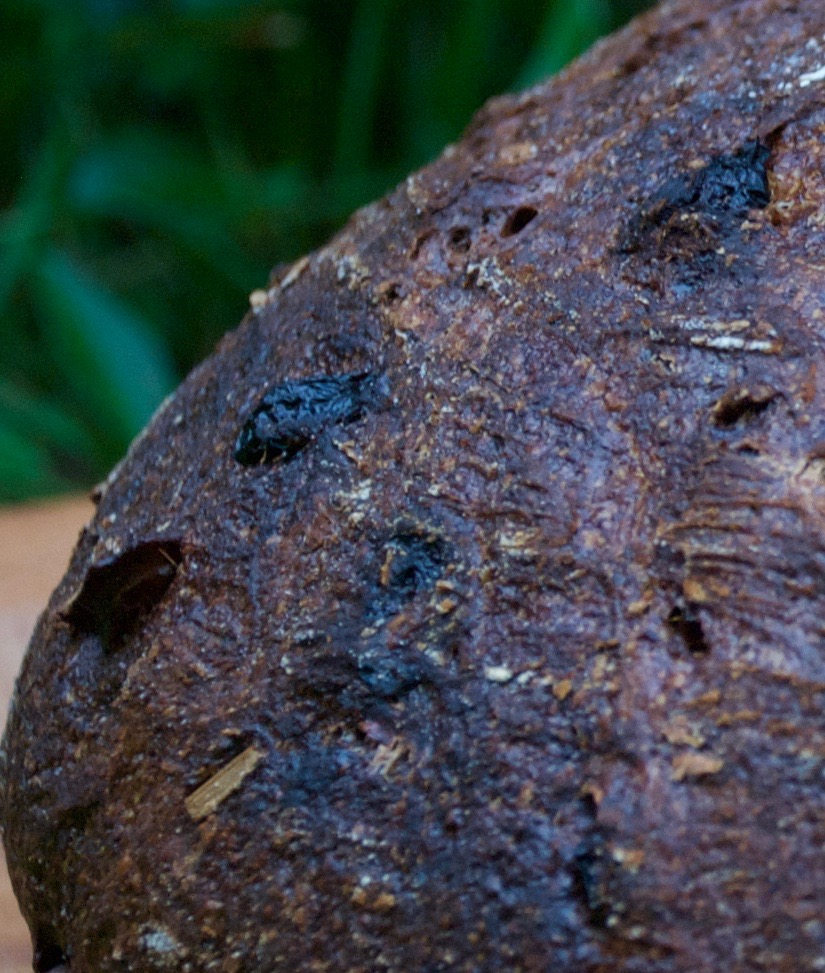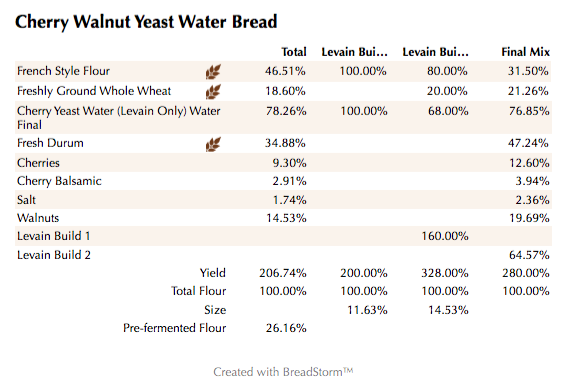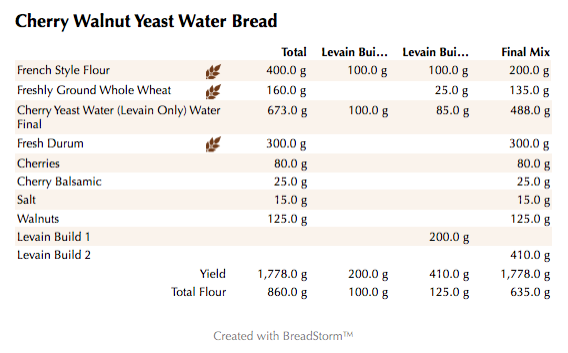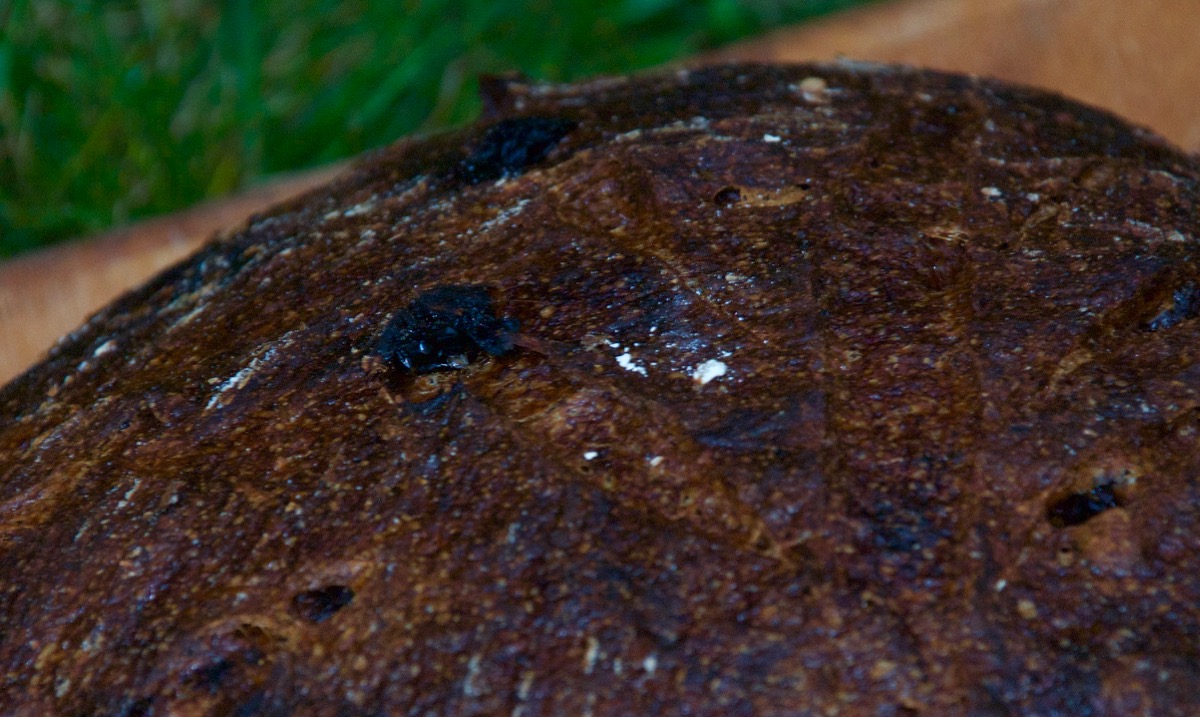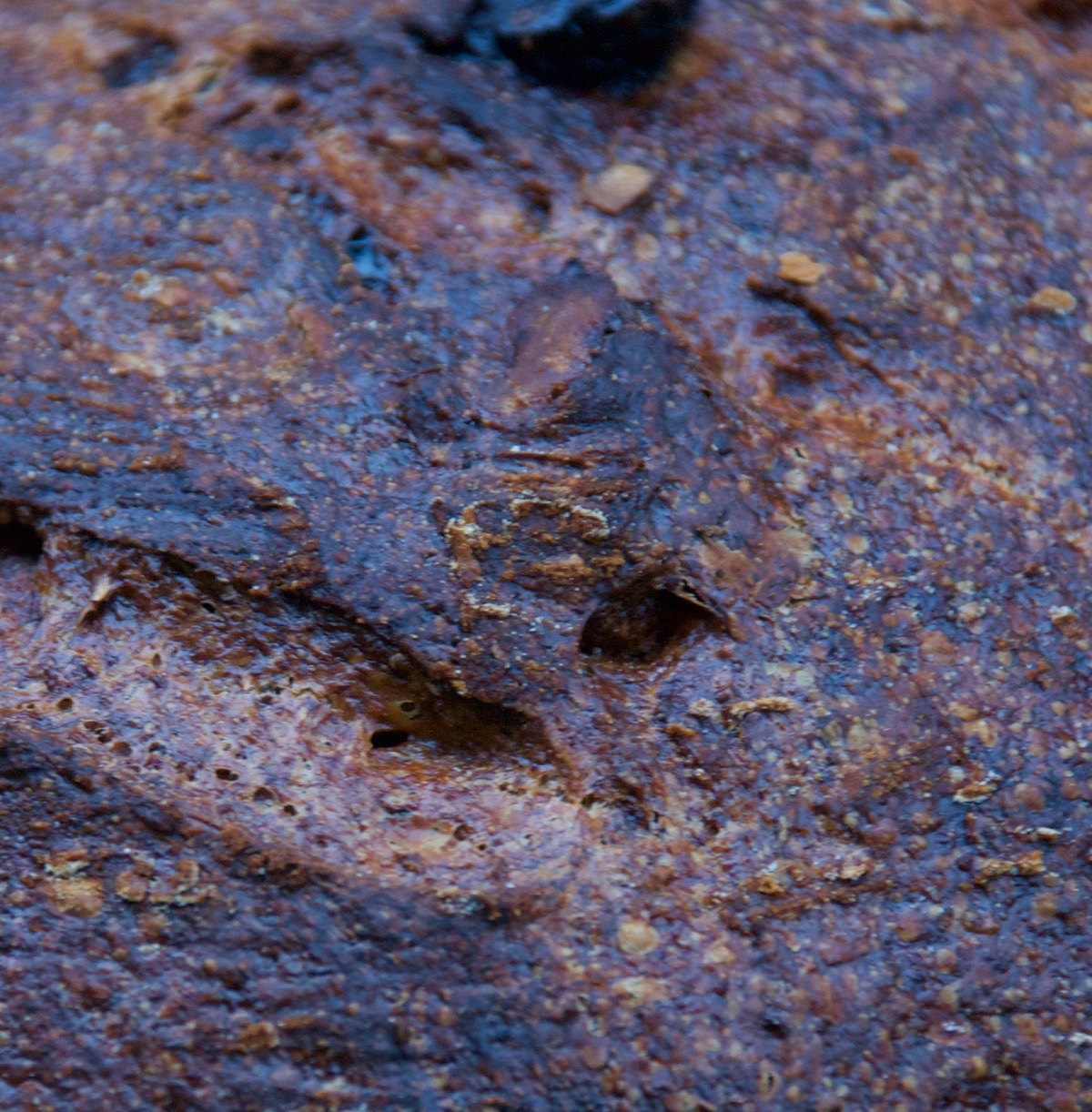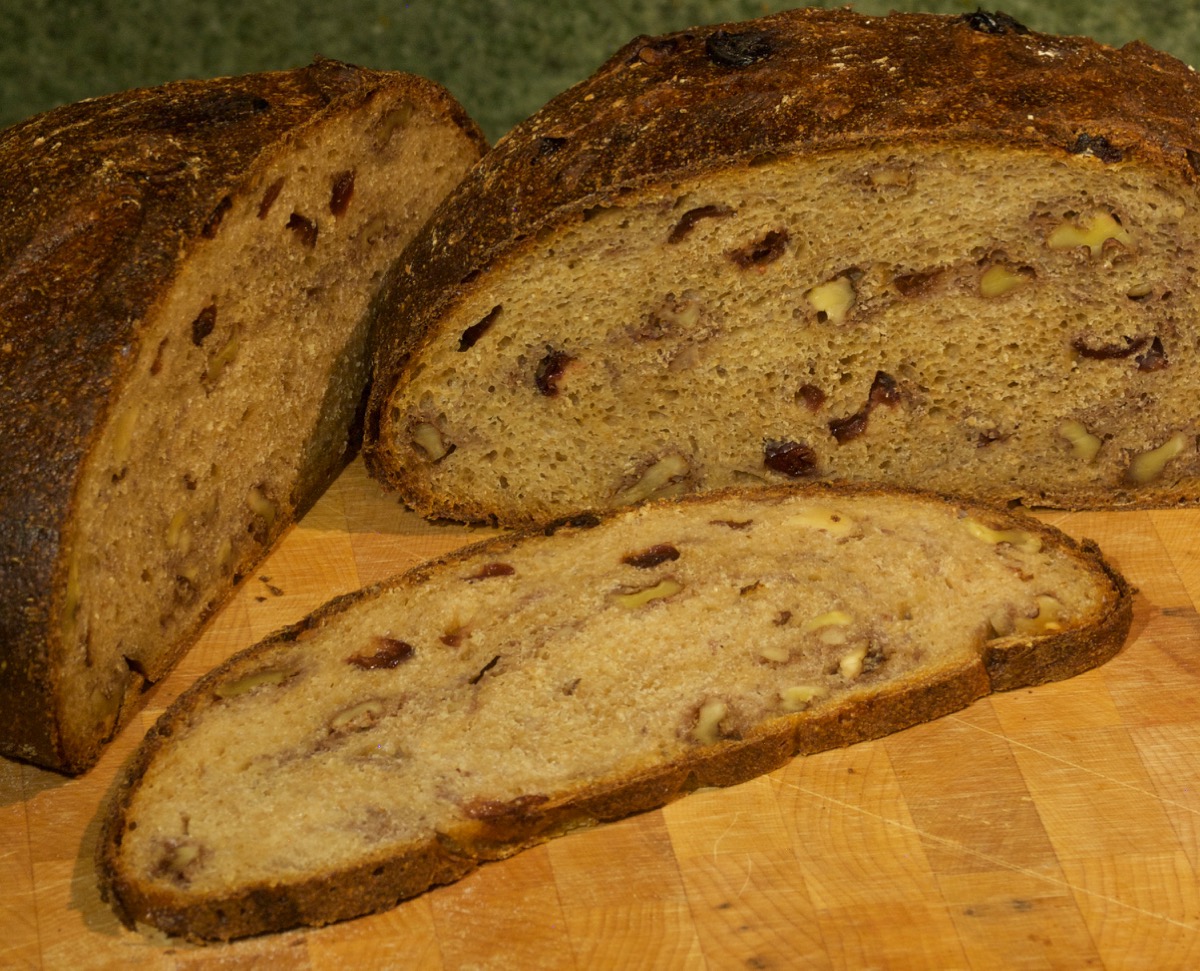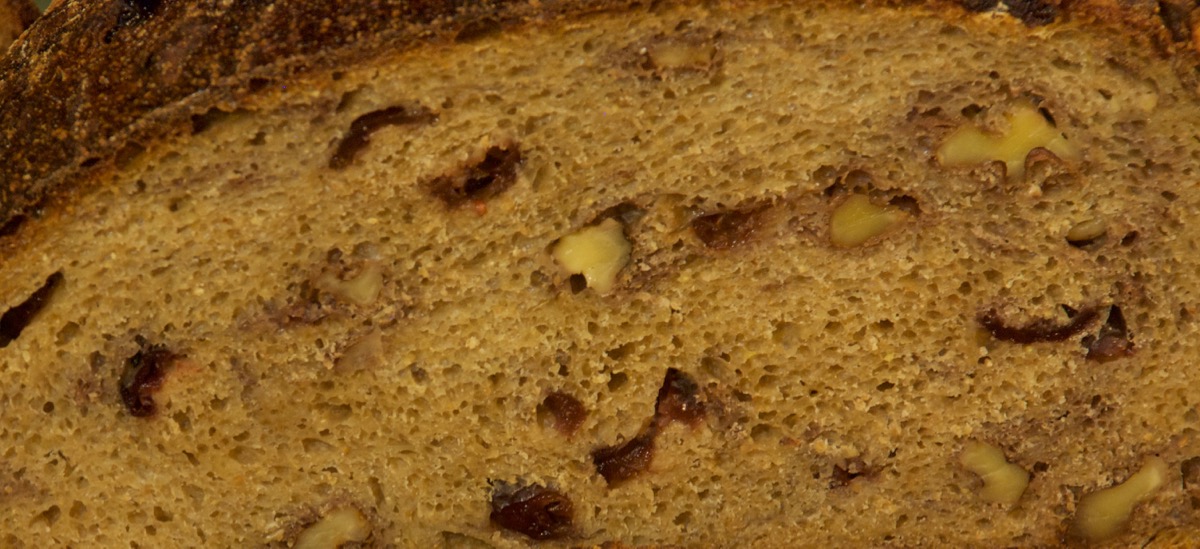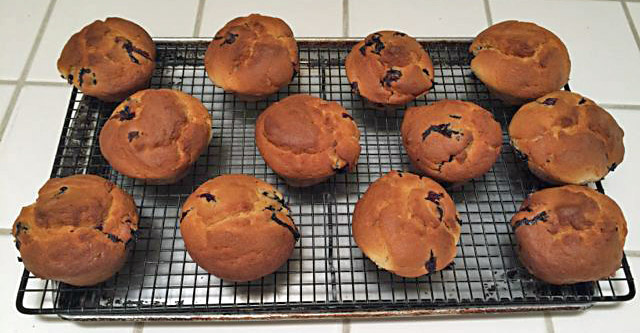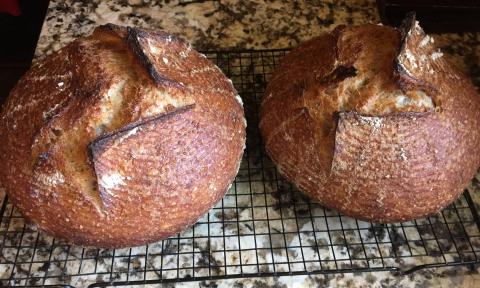
Cherry Walnut Yeast Water Bread

It's been a while since I baked with a Yeast Water starter and I now that cherries are in season and inexpensive I figured it was time to build one again.
It took a few days to bring the YW to life with a handful of cherries, water and a little honey. Once it was ready to use I built up a levain in 2 stages and used a nice combination of flours including freshly milled whole wheat and durum flour.
Naturally I needed to add some cherries to the main dough and figured some walnuts would make this a winner.
The final dough turned out great with a nice soft semi open crumb chock full of cherries and walnuts.
Download BreadStorm .BUN file here.
Levain Build 1
Mix all the levain ingredients together for about 1 minute and cover with plastic wrap. Let it sit at room temperature for around 7-8 hours or until the starter has doubled.
Levain Build 2
Add the ingredients for Build 2 and mix until smooth. Let is sit at room temperature until doubled around 4-5 hours. You can then either use it immediately or refrigerate it for a day before using.
Main Dough Procedure
Mix the flours with the main dough water for about 1 minute. Let the rough dough sit for about 20 minutes to an hour. Next add the levain, and salt and mix on low for 5 minutes and then add in the cherries and walnuts and mix for one additional minute. You should end up with a cohesive dough that is slightly tacky but manageable. Remove the dough from your bowl and place it in a lightly oiled bowl or work surface and do several stretch and folds. Let it rest covered for 10-15 minutes and then do another stretch and fold. Let it rest another 10-15 minutes and do one additional stretch and fold. After a total of 2 hours place your covered bowl in the refrigerator and let it rest for 12 to 24 hours. (Since I used my proofer I only let the dough sit out for 1.5 hours before refrigerating).
When you are ready to bake remove the bowl from the refrigerator and let it set out at room temperature still covered for 1.5 to 2 hours. Remove the dough and shape as desired.
The dough will take 1.5 to 2 hours depending on your room temperature and will only rise about 1/3 it's size at most. Let the dough dictate when it is read to bake not the clock.
Around 45 minutes before ready to bake, pre-heat your oven to 550 degrees F. and prepare it for steam. I have a heavy-duty baking pan on the bottom rack of my oven with 1 baking stone on above the pan and one on the top shelf. I pour 1 cup of boiling water in the pan right after I place the dough in the oven.
Right before you are ready to put them in the oven, score as desired and then add 1 cup of boiling water to your steam pan or follow your own steam procedure.
After 5 minute lower the temperature to 450 degrees. Bake for 35-50 minutes until the crust is nice and brown and the internal temperature of the bread is 205 degrees.
Take the bread out of the oven when done and let it cool on a bakers rack before for at least 2 hours before eating.
